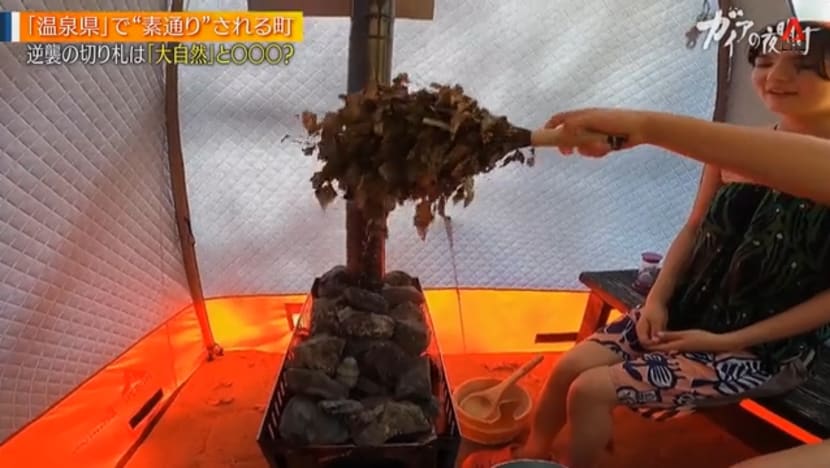Gaia Series 12 : Bungo-Ono City - The Sauna Town & Transforming A "Bare Street" Spot Into A Lively Place
Transforming "unnoticed" places into spots where people gather is the theme this week, with the focus on Bungo-Ono City in Oita Prefecture and I Plaza, which is connected to Toyosu Station in Tokyo.

This week, we focus on transforming places that are usually unnoticed into crowded spots. Bungo-Ono City is located in the southern part of Oita Prefecture. Oita is one of the best hot spring prefectures in Japan, boasting famous hot spring resorts such as Beppu and Yufuin. In 2019, Beppu City attracted 8.3 million tourists, while Yufuin City saw 4.4 million visitors.
Unfortunately, despite being located in a hot spring hub, Bungo-Ono City is relatively unknown as it has no hot springs. The mayor of Bungo-Ono City Fumitoshi Kawano wanted something to be done about this. So, it was decided to create a “sauna town” in Bungo-Ono to attract tourists. The man behind the idea was Ken Takahashi, who manages a guest house in Bungo-Ono City. He realised a sauna would be best enjoyed in a natural setting. The sauna he created has water drawn from a stream. Visitors can enjoy the sauna in the open air, surrounded by a spectacular view.
The authorities also decided to take advantage of the natural beauty of Bungo-Ono and make use of the city’s great outdoors and magnificent nature as a selling point. Examples of such spots are the Harajiri Waterfalls and the Inazumi Underwater Cave. There are currently five sauna facilities that take advantage of Bungo-Ono's nature. Since July last year, around 3,000 sauna tourists have visited the city.
As part of efforts to make Bungo-Ono a sauna town, special dishes to be enjoyed after sweating it out in a sauna were also created. They include soba noodles with lots of chilli peppers and a beaten egg, spicy beef noodles and Roryu curry. There are 20 restaurants that offer such “sauna dishes”. The aim is to get sauna tourists to eat at these local restaurants and also have them enjoy the whole city by having them go to tourist spots and hotels. There were also some residents who have never tried saunas. So Mr Takahashi wanted to introduce them to the sauna culture as well. For example, he visited a local master brewery producing barley shochu, Fujii Jozo. He built a tent sauna in its yard and the brewery's owner Junichiro Fujii got to experience a sauna for the first time.
Motoko Tanaka is the president of a company called Grand Level, which handles building design and engineering. She is also an expert at getting people to gather in places that often go unnoticed. For example, in Sumida Ward, Tokyo, she created Cafe Laundry, a laundromat with a cafe in front of it. It has sewing machines, irons, books, records and even toys for kids. Her goal was to create a comfortable space where locals can relax and enjoy coffee or tea while doing their laundry.
Ms Tanaka’s husband, Masaki Onishi, is an architect and his role is to explain Ms Tanaka’s ideas to clients in detail but using simple terms. He also draws blueprints for Ms Tanaka’s ideas.
Ms Tanaka took on another project, this time in Toyosu, Tokyo. It is an area with many tower mansions and several large department stores. But there is a certain spot which was “left behind” - I Plaza, which is connected to Toyosu Station. It serves as a transit zone for people en route to their destinations. As it is located in B1, it was hard for people to notice. The shops and restaurants lining the plaza were also having a tough time getting customers.
Ms Tanaka came up with the idea of transforming the plaza into a place where people would gather, by using big red benches. Mr Terada from the manufacturing company IHI Corporation handled the project as the area was once the site of IHI's shipyard which was redeveloped. Ms Tanaka and her team worked with Tsubame Architecture to develop benches which are comfortable and safe. They created benches which are deeper and flatter compared to typical benches. The idea was for the benches to be versatile where people could to eat, study or even take care of their babies. The colour chosen was a very noticeable red, but a darker shade that is easy on the eyes.
The placement of the benches was decided by Mr Terada and his IHI team. The route from the station exit to the plaza exit has the highest foot traffic so Mr Terada decided to place the benches along this stretch. The benches, numbering nearly 20, were placed near elevators and restaurants all around the plaza. The project was a success and people started to gather at I Plaza, thanks to the magic of the red benches.
Tips:
1) After sweating it out in a sauna, try special sauna dishes in Bungo-Ono City, Oita
2) Look out for the red benches at I Plaza, which is connected to Toyosu Station in Tokyo












